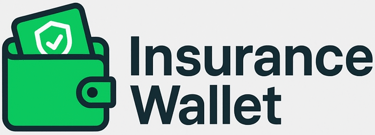⚖️ Pure Risks vs. Speculative Risks — Knowing the Difference that Matters
💡 Why Understanding Risk Types is Important
In the world of insurance, not every kind of risk is worth insuring.
Some risks come without warning — like a sudden illness or a fire. Others are taken willingly — like investing in the stock market or starting a new business.
Both involve uncertainty, but only one kind truly fits into the world of insurance.
Let’s understand why.
🎯 The Two Faces of Risk
Every uncertain situation can broadly fall under one of these two heads:
1️⃣ Pure Risks
2️⃣ Speculative Risks
They might sound similar, but they are worlds apart in nature and purpose.
🔹 Pure Risks – The Uninvited Trouble
Pure risks are those risks that no one chooses.
They happen suddenly and can only lead to loss or no loss, never profit.
Imagine these situations:
A fire breaks out in a warehouse.
A person falls ill and needs hospitalization.
A house is damaged by a storm.
No one wants these things to happen. And when they do, someone suffers financially.
That’s exactly why insurance exists — to protect against pure risks.
📘 In short: Pure Risks = Unexpected + Beyond control + Cause financial loss
🔸 Speculative Risks – The Chosen Gamble
Speculative risks are different. These are voluntary — people take them hoping to gain something.
For example:
Buying shares expecting prices to rise
Starting a new business for profit
Trading currencies for gain
Sometimes you win, sometimes you lose. That’s the nature of speculative risks — gain, loss, or break-even.
Insurers stay away from these risks because they depend on personal choice and market behavior, not chance or accident.
📘 In short: Speculative Risks = Voluntary + Profit motive + Unpredictable
🚫 Why Speculative Risks Are Not Insurable
Insurance is a safety net, not a profit partner. Covering speculative risks would destroy that balance. Here’s why insurers avoid them:
1️⃣ You choose them yourself.
These are voluntary — if someone chooses to speculate, they must accept the outcome.
2️⃣ Profits are private, losses would be public.
People wouldn’t share gains but would expect compensation for losses — unfair to others in the insurance pool.
3️⃣ Unpredictable and unstable.
Market movements, government policies, or human behavior can’t be forecast precisely — premiums can’t be priced fairly.
4️⃣ Encourages risk-taking.
If speculative risks were insured, people might take reckless bets knowing insurance will rescue them.
🧠 How Agents Should Explain It to Clients
Clients often ask, “Can I insure my business loss?”
Here’s how you can answer:
“Insurance protects you from things you cannot control — like fire, theft, or accidents.
But if a loss happens because of a business decision or market movement, that’s a different kind of risk — speculative — and no insurer covers that.”
Simple, clear, and trustworthy.
✨ Quick Recap
Pure Risks are accidental and can be insured.
Speculative Risks are taken by choice and cannot be insured.
Insurance protects you from life’s surprises, not life’s experiments.
🧾 Key Takeaways for Agents & Students
✅ Always link “insurable” with “pure risk.”
✅ Remember: Insurance = Protection from accidental loss, not intentional risk.
✅ For exams — know at least 2 examples each of Pure and Speculative Risks.
✅ For clients — explain the difference using real-life examples instead of definitions.
